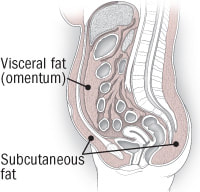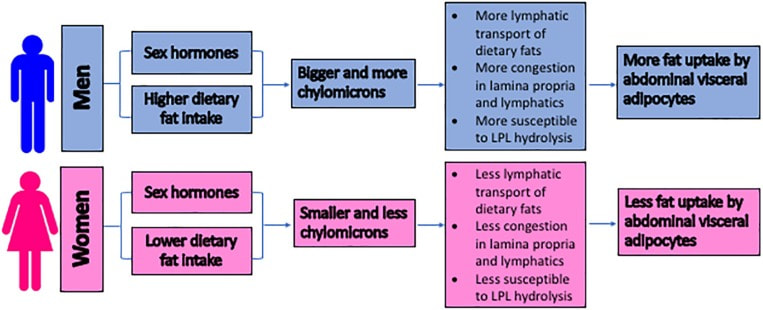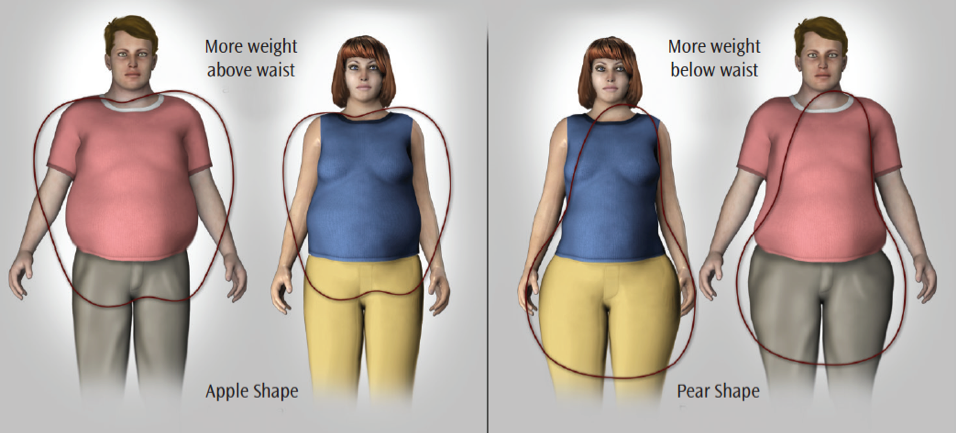|
Welcome back! This week we're looking at gut health! We would be remiss to not explore the health risks associated with an unhealthy waistline. Obesity alone carries many serious health risks, but experts have been telling us for decades that belly fat has unique risk factors if not in proportion to the rest of the body fat distribution in the body. As the waistline goes up IN RELATION TO OVERALL BODYFAT, so does risk of serious disease risks, including heart disease, diabetes, many cancers and dementia. But it may be a confusing message to digest, so let's explore! Location, location, location What makes the midsection uniquely situated to increase those risks? It has to do with two distinctly different locations of fat accumulation:
Lipotoxicity disrupts production and sensitivity to insulin (the hormone that is produced by the pancreas to deliver glucose into muscle cells) and disrupts other normal regulatory functions. Further, when these cells die, it incurs an INFLAMMATORY RESPONSE (by release of inflammatory cytokines - previously discussed in this BSNF blog post). Inflammation alone further compounds the health risk with it's own long list of health risks! This disruption in regulatory functions and inflammation, in a nutshell, is where the elevated health risk comes from. Measure up!Waist measurements 35 or more inches for women or 40 or more inches for men, are the typical markers where increased risk is introduced, and chances are you’re harboring a potentially dangerous amount of abdominal fat. Run a tape measure around the upper part of the ilium (hip bone). Relax completely, and exhale before reading the accurate mark of the tape measure. Facts are stubborn things -John Adams Here are some stubborn truths about visceral fat that may surprise you. Be sure to read the GOOD NEWS towards the bottom of the post
Good news! Lifestyle can overcome our predispositions!Here are some ways to counteract our biological drives to create visceral fat. This is especially important for those already dealing with a
Thanks for hangin out with me as we discuss this very important topic! This is EVERYONE's business, not just those already living with unhealthy waistlines. Keep that gut healthy!
Until next time...
0 Comments
Leave a Reply. |
Broad Scope Narrow Focus BlogWelcome to the Broad Scope Narrow Focus Blog! I hope you find a lot of useful and applicable information as we explore the broad world of Wellness together. Check in often, as there will be new posts weekly! Enjoy Archives
September 2021
Categories |
Services |
Hours & Contact InformationHours of Operation: The Facility is staffed Tuesday - Thursday 7a-5p
*Facility is accessible 24 hrs / 7 days a week e . [email protected] p . (616) 787 - 7710 |





 RSS Feed
RSS Feed